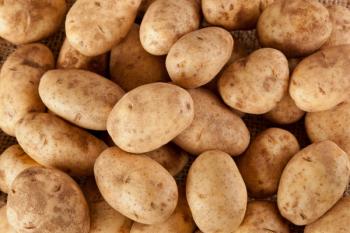
New Breakthrough in Paprika Authentication: FT-NIR Analysis Ensures Quality and Detects Adulteration, Part 2
Food authentication is becoming increasingly important. In this article, the editors of Spectroscopy outline the methodology used in a recent study used to analyze paprika.
This article is the second part of a two-part series. To read, part one, click
Fourier transform near-infrared (FT-NIR) spectroscopy is a technique that has been used in the food and beverage industry extensively (1). As mentioned in part one of this article series, FT-NIR spectroscopy can analyze samples quickly, and because it is a nondestructive technique, the sample is not destroyed during analysis (1,2). It is one reason why scientists have been using FT-NIR to assess food adulteration, focusing their efforts on food products and spices that are important in the global economy.
In
As the researchers note in their study, the popularity of paprika has made it a target for food fraud, where cheaper, lower-quality paprika is often adulterated with synthetic dyes like Sudan II, III, IV, and Congo Red to enhance its appearance (3). Such practices not only deceive consumers, but they also pose potential health risks because these dyes are not approved for use in food products because of their carcinogenic properties (3).
To combat this issue, Dr. Viñas and the team developed a comprehensive strategy that uses FT-NIR spectroscopy to create a "fingerprint" of paprika samples. This fingerprint was then analyzed using chemometric models based on orthogonal partial least squares-discriminant analysis (OPLS-DA) and partial least squares (PLS) regressions (3). These models are capable of not only identifying the geographical origin of the paprika, but they also can detect and quantify adulteration with harmful dyes (3).
In their study, the researchers analyzed 115 pure paprika samples, including those with protected designation of origin (PDO) labels from Spain, France, and Hungary, as well as samples from China and Zambia. Additionally, they prepared 1,380 adulterated samples by adding various concentrations of Sudan dyes and Congo Red to the pure paprika. The goal was to test the effectiveness of their method in distinguishing between pure and adulterated samples and in identifying the specific adulterant present (3).
When employing the chemometric models, the research team found that the OPLS-DA models successfully differentiated between the pure and adulterated paprika samples with a high classification success rate (3). The models were also able to accurately identify the geographical origin of the paprika, correctly classifying samples according to their PDO labels from different regions. Moreover, the PLS regressions allowed the researchers to quantify the amount of adulterant in the paprika, with detection levels as low as 0.1% (3).
The method's accuracy was further validated by analyzing a set of 50 paprika samples, which included both pure and adulterated samples. The validation rates were high: 96.8% accuracy in identifying adulterated samples, 99.6% accuracy in determining the type of adulterant, and 100% accuracy in classifying pure samples according to their PDO label and variety (hot, sweet, or smoked) (3).
The implications of this study are significant for both the food industry and regulatory bodies. The ability to quickly and accurately authenticate paprika and detect adulteration will help protect consumers from fraudulent and potentially harmful products (3). It also provides a valuable tool for producers and distributors of high-quality, PDO-labeled paprika, who can use this method to verify the authenticity of their products and maintain consumer trust (3).
Other methods are also being tried in assessing paprika authenticity. A research team from Mohammed V University in Rabat is also looking at this issue as well, proposing how DNA barcoding could also potentially help fight this growing problem (4).
Food fraud is an ongoing battle that scientists are helping to fight. By using analytical methods such as FT-NIR spectroscopy, scientists are contributing in a real way to safeguard human health. The success of the method Dr. Viñas and team presented offers a new path toward future studies that can examine similar approaches to be used in the authentication and quality control of other food products (3). As the food industry continues to face challenges related to fraud and adulteration, the development and implementation of reliable, efficient, and non-invasive testing methods will be crucial in maintaining food safety and consumer confidence.
References
(1) Wetzel, W. Fourier Transform Near Infrared Spectroscopy Analyzing the Composition of Cookies. Spectroscopy. Available at:
(2) Wetzel, W. New Breakthrough in Paprika Authentication: FT-NIR Analysis Ensures Quality and Detects Adulteration, Part 1. Spectroscopy. Available at: (accessed 2024-08-26).
(3) Castell, A.; Arroyo-Manzanares, N.; Lopez-Garcia, I.; et al. Authentication Strategy for Paprika Analysis According to Geographical Origin and Study of Adulteration Using Near Infrared Spectroscopy and Chemometric Approaches. Food Cont. 2024, 161, 110397. DOI:
(4) Sakho, A.; Tazi, S.; El Fahime, E.; Skalli, S. DNA Barcoding for Paprika Authentication and Quality Assessment on the Moroccan Market. Proc. Natl. Acad. Sci., India, Sect. B Biol. Sci. 2024, ASAP. DOI:
Newsletter
Get essential updates on the latest spectroscopy technologies, regulatory standards, and best practices—subscribe today to Spectroscopy.




